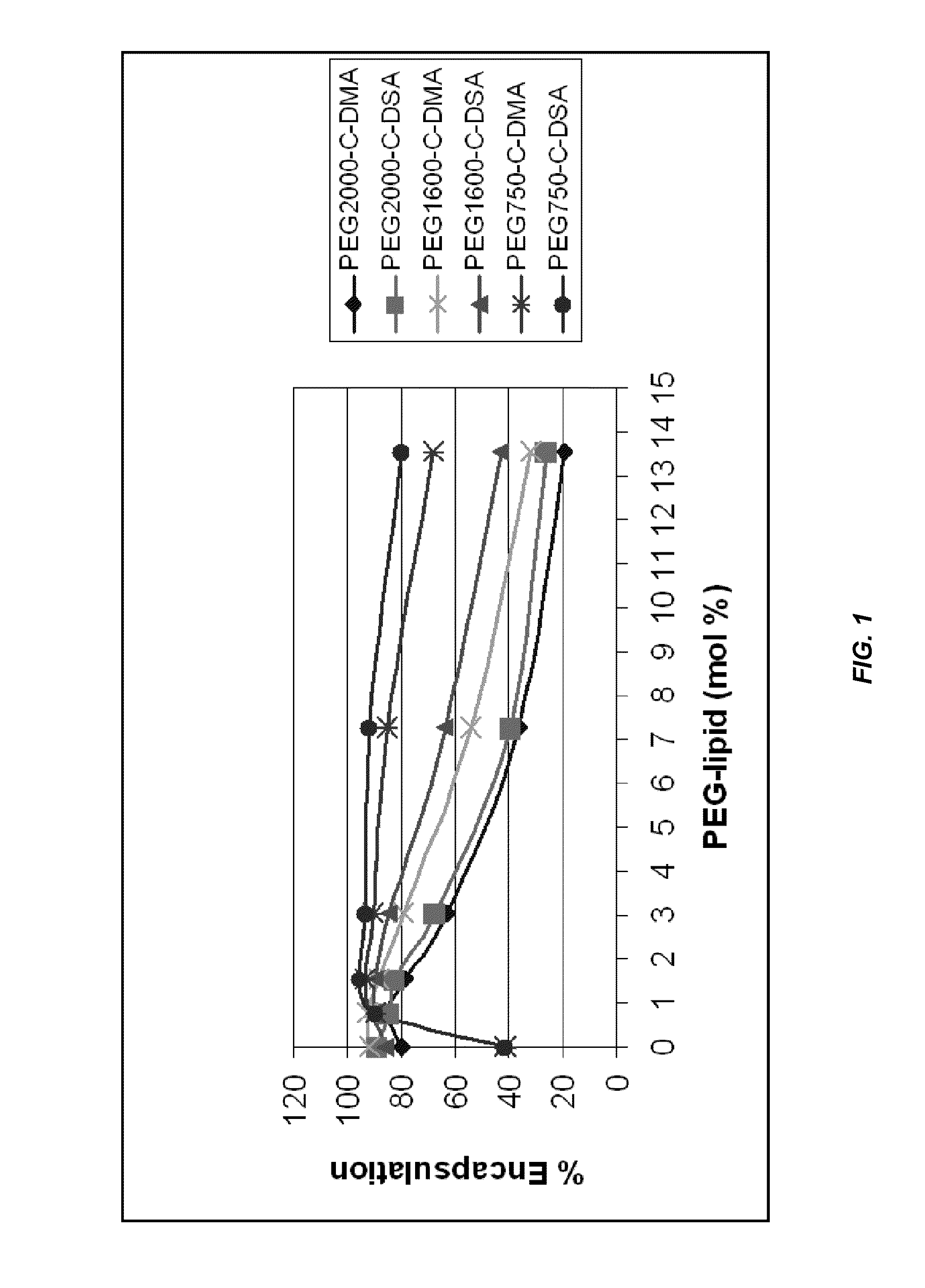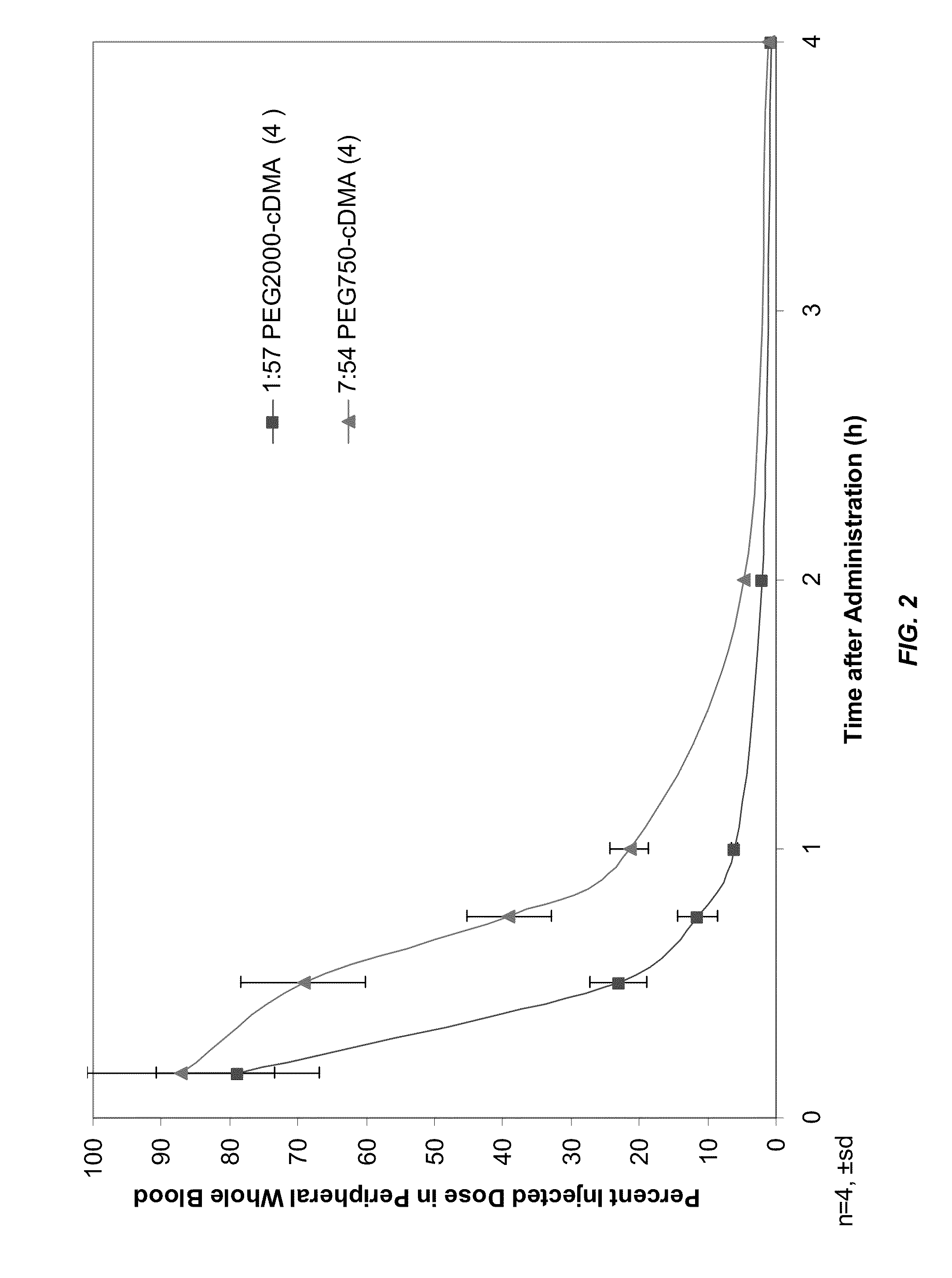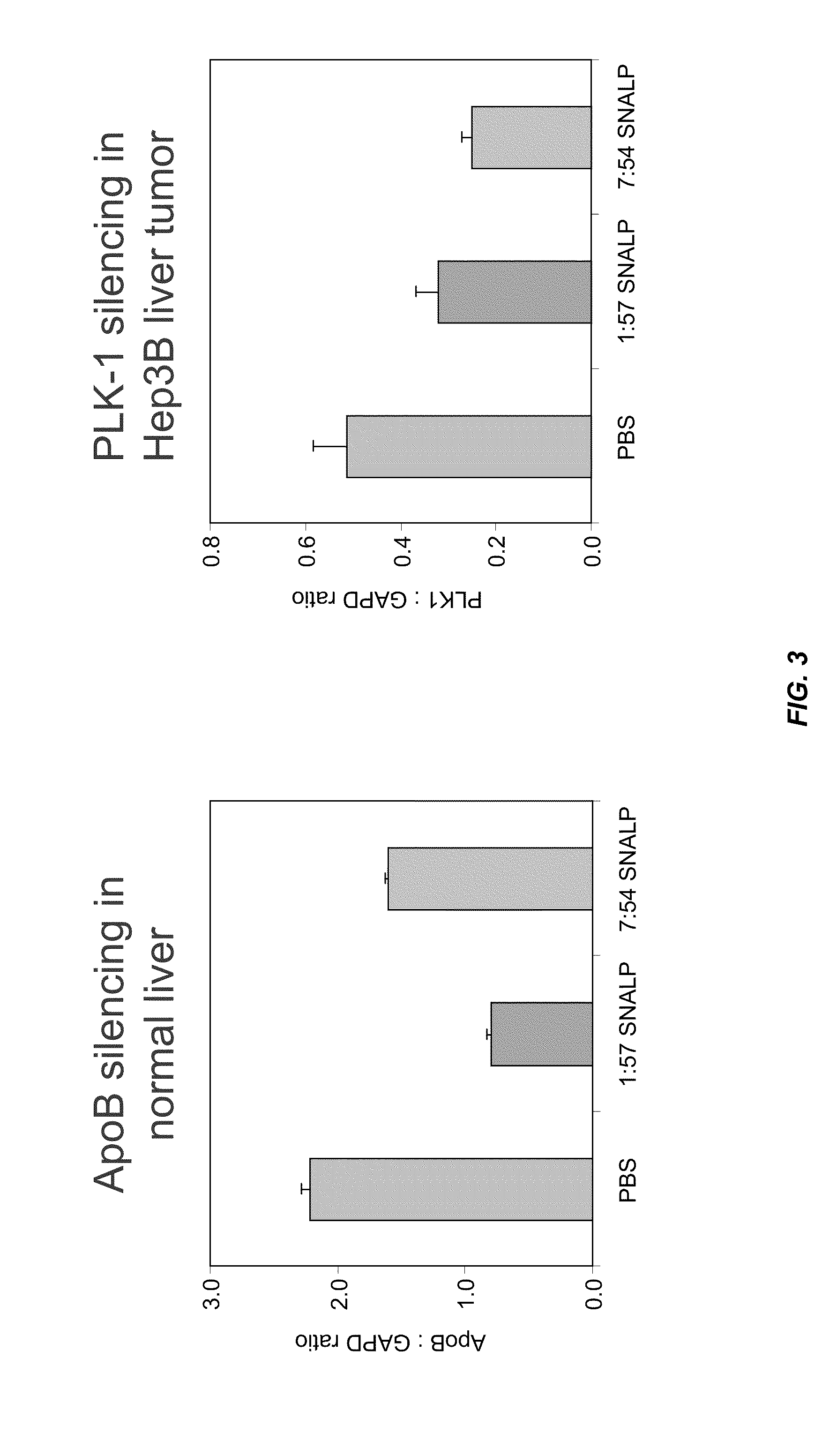Novel lipid formulations for delivery of therapeutic agents to solid tumors
a technology of lipid formulations and solid tumors, applied in the direction of genetic material ingredients, oil/fat/waxes non-active ingredients, drug compositions, etc., can solve the problems of immune response, potential reversion, and range of limitations, so as to increase the silencing activity, increase the potency, and increase the tolerability
- Summary
- Abstract
- Description
- Claims
- Application Information
AI Technical Summary
Benefits of technology
Problems solved by technology
Method used
Image
Examples
example 1
Materials and Methods
[0595]siRNA: All siRNA molecules used in these studies were chemically synthesized and annealed using standard procedures.
[0596]Lipid Encapsulation of siRNA: In some embodiments, siRNA were encapsulated into stable nucleic acid-lipid particles (SNALP) composed of the following lipids: (1) the lipid conjugate PEG750-C-DMA (3-N-[(-Methoxypoly(ethylene glycol)750)carbamoyl]-1,2-dimyristyloxypropylamine); (2) the cationic lipid DLinDMA (1,2-Dilinoleyloxy-3-(N,N-dimethyl)aminopropane) or DLin-K-C2-DMA (2,2-dilinoleyl-4-(2-dimethylaminoethyl)-[1,3]-dioxolane; “C2K”); (3) the phospholipid DPPC (1,2-Dipalmitoyl-sn-glycero-3-phosphocholine; Avanti Polar Lipids; Alabaster, Ala.); and (4) synthetic cholesterol (Sigma-Aldrich Corp.; St. Louis, Mo.) in the molar ratio 6.76:54.06:6.75:32.43, respectively. In other words, siRNA were encapsulated into SNALP of the following “7:54” formulation: 6.76 mol % PEG750-C-DMA; 54.06 mol % DLinDMA or C2K; 6.75 mol % DPPC; and 32.43 mol %...
example 2
Characterization of the Effect of PEG-Lipid Alkyl Chain Length and PEG Polymer Length on Encapsulation Efficiency
[0600]PEG-lipid conjugates were titrated into solutions containing fixed concentrations of DLinDMA and cholesterol. A SNALP formulation containing an siRNA molecule targeting luciferase (Luc) was produced by mixing the nucleic acid and lipid solutions using a syringe press method (0.2 mg scale) with a 1 mm T-connector and direct dilution into PBS.
[0601]FIG. 1 shows that better encapsulation efficiencies of the siRNA payload were achieved when a higher mol % of a PEG750-lipid conjugate such as PEG750-C-DMA or PEG750-C-DSA was used in the SNALP formulation. In particular, both PEG750-lipid conjugates retained high siRNA encapsulation efficiencies (about 90% or greater) at 7 mol % of PEG-lipid, whereas PEG2000-lipid conjugates displayed only about 40% encapsulation efficiencies at the higher mol % of PEG-lipid.
example 3
Characterization of the 7:54 DLinDMA SNALP Formulation
[0602]A 7:54 DLinDMA SNALP formulation was prepared with an siRNA targeting polo-like kinase 1 (PLK-1) (Genbank Accession No. NM—005030) as the nucleic acid component. The PLK-1 siRNA sequence used in this study is provided in Table 3.
TABLE 3% ModifiedPLK-1% 2′OMe-in DS siRNAsiRNA SequenceModifiedRegionPLK1424 5′-AGAUCACCCUCCUUA9 / 42 = 21.4%7 / 38 = 18.4%2 / 6AAUAUU-3′(SEQ ID NO: 1)3′-CUUCUAGUGGGAGGAAUUUAU-5′(SEQ ID NO: 2)Column 1: The number after “PLK” refers to the nucleotide position of the 5′ base of the sense strand relative to the start codon (ATG) of the human PLK-1 mRNA sequence NM_005030. Column 2. 2′OMe nucleotides are indicated in bold and underlined. The 3′-overhangs on one or both strands of the siRNA molecule may alternatively comprise 1-4 deoxythymidine (dT) nucleotides, 1-4 modified and / or unmodified uridine (U) ribonucleotides, or 1-2 additional ribonucleotides having complementarity to the target sequence or the com...
PUM
| Property | Measurement | Unit |
|---|---|---|
| mol % | aaaaa | aaaaa |
| mol % | aaaaa | aaaaa |
| mol % | aaaaa | aaaaa |
Abstract
Description
Claims
Application Information
 Login to View More
Login to View More - R&D
- Intellectual Property
- Life Sciences
- Materials
- Tech Scout
- Unparalleled Data Quality
- Higher Quality Content
- 60% Fewer Hallucinations
Browse by: Latest US Patents, China's latest patents, Technical Efficacy Thesaurus, Application Domain, Technology Topic, Popular Technical Reports.
© 2025 PatSnap. All rights reserved.Legal|Privacy policy|Modern Slavery Act Transparency Statement|Sitemap|About US| Contact US: help@patsnap.com



